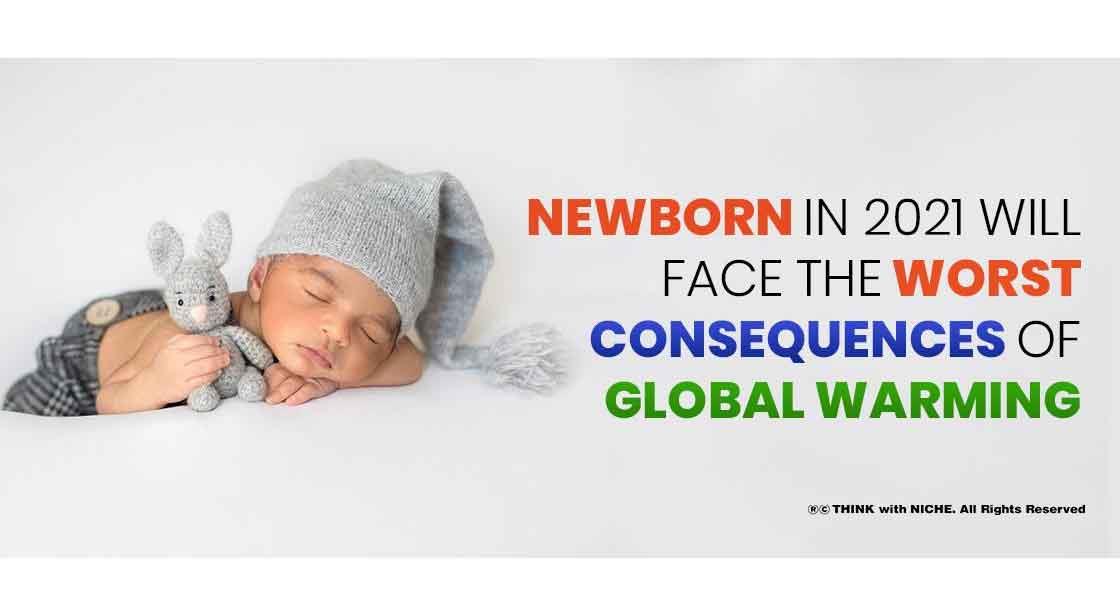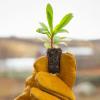Newborn in 2021 Will Face The Worst Consequences of Golbal Warming

Blog Post
The researchers used a database of non-linear and non-greenhouse emissions projections from the ISIMIP project to determine maturity level severe incident vulnerability. #ThinkWithNiche
New Born In 2021 Will Face The Worst Consequences Of Global Warming
"2021 is a make-or-break year for climate action," the World Meteorological Organization said on June 21, "with the opportunity to avert the worst consequences of global warming include increasingly extreme water shortages, plagues, and storm surges quickly." Rather than natural climatic fluctuations, carbon pollution from vehicles, hydroelectric dams, and other sapient sources is the chief factor. Global warming functions as a covering, confining the heat in the atmosphere earth's atmosphere and altering the global temperature. Tropical Cyclone Yasi, which hit Fiji in January 2021, wreaked havoc on the ecosystem as a result of climate change. Lets' take a glimpse at how the young generation will fall susceptible to the worst consequences of climate change closing towards 2022 and has inevitably resurrected in 2021.
Based on statistics from the Inter-sectoral Impact Model Intercomparison Project, a kid born in 2021 would suffer twice as many wildfires, two to three times as many droughts, almost three times as many river floods and crop failures, and seven times as many heatwaves as a person born today (ISIMIP). This is based on existing government commitments to reduce greenhouse gas emissions, which will be discussed at the next international climate meeting COP26 in Glasgow. "Our findings reveal a significant risk to human health of future," confirmed by Wim Thiery of Vrije Universiteit Brussel.
"We even have grounds to believe that our projections understate the actual hikes that young people will experience," Thiery continued. People under the age of 40 today will have an "unprecedented existence" in terms of droughts, heatwaves, river floods, and crop failures, according to the experts.
"We can definitely lift a significant portion of the climate burden from our children's shoulders if we restrict warming to 1.5 degrees Celsius by phasing out fossil fuel usage," said Katja Frieler, who is directing ISIMIP and a prominent scientist at the Potsdam Institute for Climate Impact Research, as well as a co-author of the paper."If we enhance climate protection from existing emission reduction promises to achieve a 1.5-degree objective, we will lower young people's potential exposure to severe events by 24% globally," Frieler stated.
"It is negative 26% in North America, minus 28% in Europe and Central Asia, and even minus 39% in the Middle East and North Africa. This is a fantastic chance "Frieler added. For example, under the existing weak climate policy, hazardous heatwaves that afflict 15% of the global land area now might grow to 46%, or treble, by the turn of the century.
However, reducing global warming below 2 degrees Celsius, as set forth in the Paris Climate Agreement ratified by virtually all countries, would lower the impacted geographical area by about 22%. This is more than now, far less with unabated overheating. The research is unique in that it is the first of its type. To quantify maturity level severe incident vulnerability, the researchers used a database of non - linear and non-greenhouse emissions estimates from the ISIMIP project, which is based on the work of scores of data analysis efforts globally.
You May Like
EDITOR’S CHOICE












